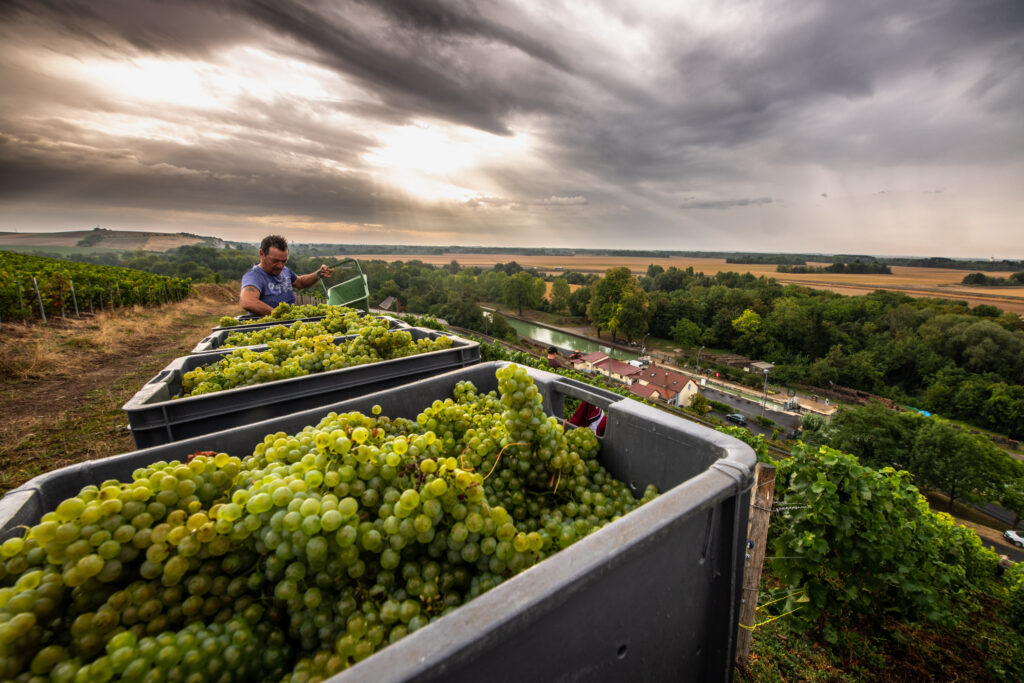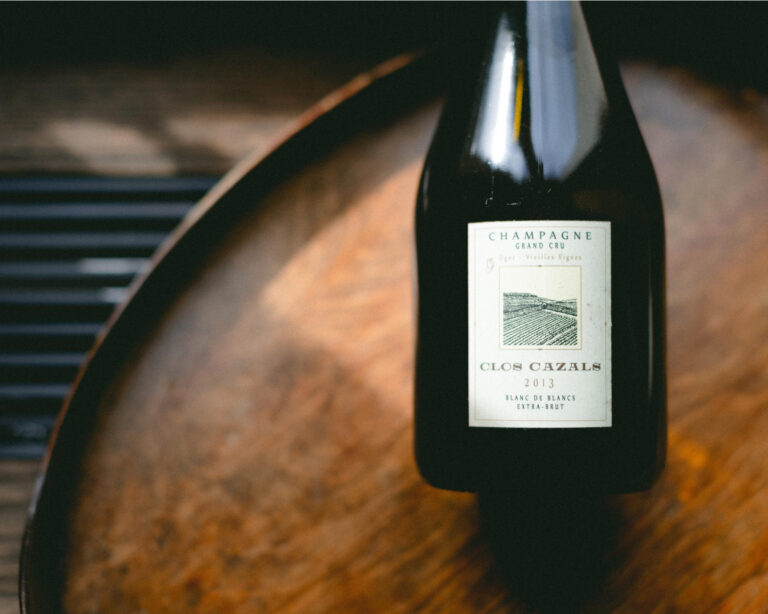Estimated reading time: 5 minutes

2015 Philipponnat ‘Clos des Goisses’
91(94)p
78pn 22ch
2015 Philipponnat ‘Le Léon’
88(91)p
100 pn
TASTING NOTE ‘From the company’s historic vineyard in Aÿ vinified from the finest part of the first pressing then aging in oak barrels without filtration or malolactic fermentation. Only 3700 bottles with 4.5 gram dosage to fight for. Deeper colour, rounder and fuller, but significantly less nuanced and shorter than Clos des Goisses from the same vintage. Definitely a wine to buy and follow in each new vintage.’
Vintage 2015 according to Champagne Club by Richard Juhlin
★★★★
After a cold and rainy winter, we had to rely on a brilliant sunny start to the summer. Fortunately, some rain fell in August, and when the harvest was salvaged under perfect conditions in September, very fine wines could be looked forward to despite very low acidity.
Here there are similarities with 1947, so a long life despite the low acidity and the fat fruit cannot be ruled out. In fact, the vintage is one of the three warmest in a hundred years. So far I have been most impressed by some insanely clean and lusciously modern wines from pure pinot meunier with Maillart Mont Martin from Villers-Allerand as the biggest star. Keep your eyes open for wines from Marnedalen in particular. The leader right now is the 2015 Bollinger P.N. Verzenay and Marguet Ambonnay La Grande Ruelle.
–
2015 by Curtis Joseph
★★★
- Harvest: August 29th
- Total Sales: 312,566,858 btl
- Yield: 10,602 kg/ha
- France: 161,860,463 btl
- Area under vine: 33,762 ha
- Export: 150,706,395 btl
- Average potential alcohol: 10.5%
- Prix Constaté : €5.89/kg
- Average total acidity: 6.9 g/l
- Average gluconic acid: 0.2 g/l
Overview: A hot, dry year without the excess of 2003
2015 was hot and dry, but it was not quite a replay of 2003. The crucial difference was a fortnight of rain at the end of August. Nonetheless, in the end the wines ended up with a generous level of richness that was not necessarily balanced their acidity.
A winter even warmer and wetter than the prior year preceded the campaign. The early spring finished with some storms in April, but then drought conditions set in from mid-May and lasted until mid-August. From mid-August almost up to the harvest there was rain, bringing worries about rot. Luckily, weather that turned clear, sunny, and cool in September, mostly contained the rot. The principle issue in 2015 was very ripe fruit and a relative lack of acidity. Most of the top vintage wines from 2015 have not yet been released, and my impressions are based on tastings of the vins clairs the following spring, or on Coteaux Champenois. Given the conditions in 2015, a number of the Coteaux Champenois have been excellent. From the north face of the Montagne, Bérèche has produced a wonderful Coteaux Blanc called Les Monts Fournois. From my notes: “Produced from grapes grown between Ludes & Rilly, where the fruit ripened to 12.2° natural with a pH of 2.84. The wine has a lovely Burgundian freshness but there is also a density here and a creamy texture that makes you want more as the wine lingers seductively on the palate.” ***** (Tasted 2017)
Another winning Coteaux came from Olivier Horiot: “The Coteaux Champenois En Barmont was produced using semi-carbonic maceration – i.e., the clusters are loaded into the tank and fermented with the just the juice that naturally comes out from the grapes during loading. The fermentation is done with wild yeast, and the wine is aged on its lees in cask for a year, and for another six months in concrete. In 2015 this vineyard produced a Coteaux that shows an exquisite ripe cherry fruit but also plenty of earthy complexity. The texture is silky and fine, and there is an impressive length to the finish. A true delight.” **** (Tasted 2017)
There were undoubtedly some gratifying successes in 2015 despite the heat. The vins clairs from Agrapart showed concentration and balance: “The Avizoise opened with sweet citrusy fruit underpinned by a strong minerality; Minéral had impressive freshness and elegance, while the vin clair for Vénus showed impressive concentration and depth of flavor while not sacrificing structure.” **** (Tasted 2016)
Perhaps surprisingly in a warm, dry vintage, Meunier seemed to do very well. The new wine from Juillet-Lallement was intense and strikingly original: “The Belle de Juillet Pinot Meunier Grand Cru is from a 0.16 ha plot in Les Buissons des Vignes in Sillery. The wine shows the typical floral and fresh fruit character of Meunier, but there is an unusual concentration. On the palate, the wine is tightly wound, structured and very long, with plenty of acidity and plenty of substance to carry it to a beautiful, lingering finish.” ***** (Finished wine, tasted 2019)
There have also been some superb Pinot Noir-based wines. In the Grande Vallée, the Noces de Craie from Hébrart was particularly striking: “100% Pinot Noir from Aÿ from the lieux-dits Cheuzelles, Longchamp, Pierre Robert, Pruche, and Chauffour. Only the cuvee is used, dosed at 5g/l. The result opens with a nose redolent of ripe apple, toast, and grilled almonds; on the palate, the wine is creamy and rich with a satisfying persistence on the finish.” **** (Finished wine, tasted 2019)
2015 is overall a vintage of good quality. Doubtless, there will ultimately be many vintage wines, and one imagines there will be some outstanding ones, although the bulk will lack the riveting attributes of freshness and verve that mark a truly great year.





